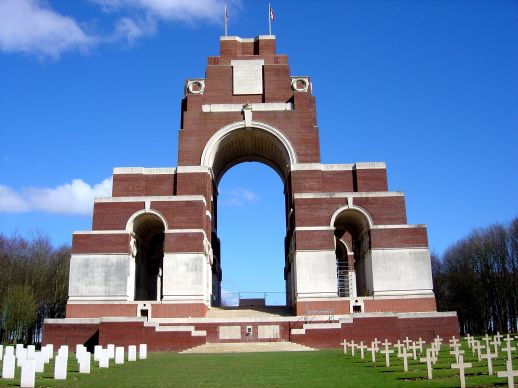William Cockill
Date of birth: 1886
Date of death: 1.7.1916
Area: Lofthouse Gate
Regiment: King's Own Yorkshire Light Infantry
Family information: Son of Joe and Charlotte Cockill of Lofthouse Gate
Rank: Private
Service number: 17841
War Service
In September 1914, shortly after Lord Kitchener’s call for volunteers to join the army, he enlisted in the Kings Own Yorkshire Light Infantry. He was posted to the 10th (Service) Battalion, which was formed by drafts of men sent from Pontefract to Berkhamstead. Along with the 9th Battalion, Kings Own Yorkshire Light Infantry, the 10th Battalion was designated part of 64th Infantry Brigade, 21st Division and moved to Wendover. On 11th September 1915, the 10th KOYLI left Southampton and sailed to Le Havre, arriving the following morning. They later moved to billets in the Zutkerque area, where the 21st Division was assembling. There followed a short organisational period, before the 10th Battalion moved towards the front. After a series of night marches, they arrived at Mazingarbe, 3 miles west of Loos.
The Battle of Loos began on the 25th September 1915 and immediately on arrival in the battle area, the 10th Battalion, in Brigade, was moving in the direction of Hill 70, in support of the 63rd Brigade. At 02.00 hrs. on 26th September, the German front trench system had been crossed, but the 64th Brigade was ordered to remain in their trenches, in Divisional reserve. As the enemy pushed the attackers back from Hill 70, the trenches occupied by the 64th Brigade became heavily involved in the fighting. During the afternoon, the 9th KOYLI moved forward and advanced to counter-attack the enemy towards the Loos-Hulloch road, closely followed by the 10th Battalion. The attackers started up the hill, but were cut down from the flanks by machine-gun and shrapnel fire. Both KOYLI battalions had to withdraw to their original line, followed all the way by artillery fire. The 10th KOYLI incurred 151 casualties during this action.
During the next few months, the 10th KOYLI, in Brigade, followed a rotational system of tours, being deployed either in the front, or support line, or in reserve. In late March 1916, the 21st Division moved from Flanders, towards the Somme Region of France.
At 07.30 hrs. on 1st July 1916, when the first infantry attacks of the battle of the Somme began, the 21st Division held the line from La Boisselle to Fricourt. The objectives for the 64th Brigade were the sunken road 1000 yards in advance of the British line and Crucifix Trench, some 400 yards further on. Five minutes before zero hour, the leading companies from the two KOYLI battalions, crept out into “No Mans Land” under cover of the barrage from our own guns. At 07.30 hrs, when the barrage lifted, the battalions advanced, only to be cut down by machine-gun fire. In spite of heavy losses and after some fierce fighting, the two battalions, in brigade, seized the first objective and pressed on to Crucifix Trench. Here the line was consolidated and held by the 64th Brigade until relieved on the morning of 2nd July.
The 10th KOYLI incurred 462 casualties during this attack, one of whom was Private Willie Cockill, reported missing, believed killed in action. His body was never identified and subsequently his name is inscribed on the Thiepval Memorial. This Memorial, which lies to the north of the road from Albert to Bapaume, bears the names of over 72000 men who died on the Somme sector and who have no known grave.
Family Life
William Cockill was born in 1886, the eldest son of Joe and Charlotte Cockill of Lofthouse Gate. William, also known as Willie, was ten years old when, in 1896, his mother Charlotte died, shortly after the birth of her seventh child. Joe Cockill, his father, was a coal miner and when Willie left school, he also obtained work in the coal mines. Initially working underground as a “clammer,” he progressed to become a coal miner, at Lofthouse Colliery.
 Thiepval Memorial
Thiepval Memorial

